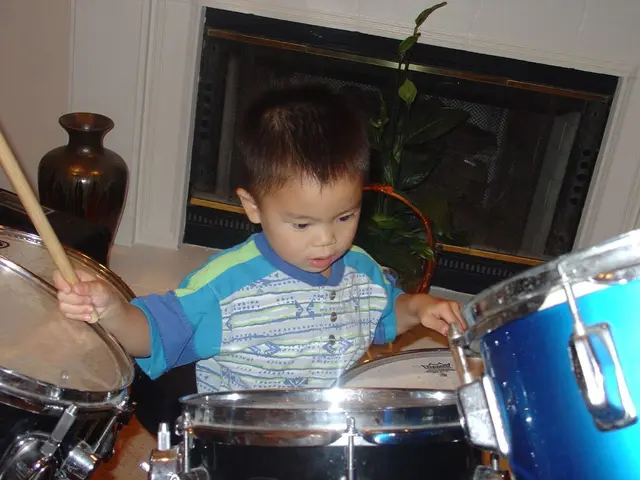Disorder Hoarding: Signs, Root Causes, Remedies, and Description
Hoarding disorder, a persistent difficulty in discarding or parting with possessions, can have far-reaching effects on individuals and those around them. This condition, often marked by emotional, social, financial, and legal complications, significantly impacts the quality of life for those affected.
Emotionally, hoarding disorder can lead to feelings of anxiety, depression, and shame. The overwhelming clutter that characterises hoarded spaces can contribute to chronic stress and sometimes exacerbate other mental health issues such as obsessive-compulsive disorder (OCD) or depression.
Socially, the impact is substantial. Hoarding can lead to social isolation due to individuals avoiding inviting others into their homes or feeling embarrassed about their living conditions. Relationship strain and breakdowns are common as family members and friends struggle with the clutter and the behaviours driving it. Neighbours may also complain about unsanitary or unsafe conditions, adding to social tension.
Financially, hoarding disorder can result in compulsive acquiring and difficulty discarding items, leading to excessive spending beyond one's means, debt, and sometimes an inability to maintain bills or meet other financial obligations. Hoarding may involve purchasing or accumulating items irrationally, sometimes borrowing or mismanaging resources to do so.
Legal ramifications can occur when hoarding creates unsafe living environments, such as fire hazards, blocked exits, infestation, or property violations. This may lead to fines, eviction, or legal intervention by housing authorities or social services. There can also be liabilities if the clutter endangers others, especially in cases involving children or elderly family members living in the hoarded space.
In summary, hoarding disorder is associated with emotional distress, social problems, financial strain, and legal issues. These factors often create a complex, self-reinforcing cycle that requires specialized care and intervention to improve outcomes.
Hoarding disorder can be triggered or worsened by various factors, including family history, brain injuries, very stressful events, differences in brain function and neuropsychological performance, OCD, obsessive-compulsive personality disorder, ADHD, depression, pica disorder, psychosis, dementia, Prader-Willi syndrome, and autism spectrum disorder.
Diagnosis of hoarding disorder involves questions about the person's belongings, home, and daily functioning, as well as possible visits to the person's living areas. People with symptoms of hoarding disorder should seek help if their symptoms are severe, chronic, interfere with everyday activities, cause significant interpersonal problems, cause severe anxiety or embarrassment, or make living environments unsafe or unhealthful.
With the right treatment, most people with hoarding disorder can reduce their major symptoms and the risk of complications. Treatment typically involves cognitive behavioral therapy (CBT) and may also include medication in some cases.
Complications of hoarding disorder include difficulty functioning in daily activities, poor hygiene, poor diet or nutrition, living in unsafe environments, social isolation and loneliness, lost work or employment, debt, financial difficulties, legal problems, lost property value or eviction, and mental health conditions such as depression, ADHD, anxiety disorders, and alcohol use disorder.
Untreated hoarding disorder is likely to become chronic, often getting more severe over time. In extreme cases, local, state, or governmental authorities and agencies may need to become involved in someone's treatment, such as to provide child or animal welfare services.
Symptoms of hoarding disorder include difficulty discarding items, acquiring various items, emotional distress, suspicion or fear of other people touching items, obsessive fears and actions, and feeling responsible for objects. According to the American Psychiatric Association, around 2-6% of the U.S. population has hoarding disorder, with some research suggesting it is more common among males.
For a diagnosis, someone must display long-term problems with getting rid of possessions, significant distress tied to losing items, items that block primary living spaces, and symptoms that do not stem from another condition. Family members or friends may want to meet with a doctor or mental health professional to learn how to broach the topic of diagnosis and treatment with someone they suspect has hoarding disorder.
Early recognition, diagnosis, and treatment usually increase the likelihood that someone with hoarding disorder can reduce the severity of their symptoms. Community public health agencies may have programs and services dedicated to helping people with hoarding disorder.
Scientifically, understanding hoarding disorder may lead to discoveries in mental health and health-and-wellness, as it is linked to various mental health conditions such as OCD, depression, and anxiety disorders. Proper nutrition is also essential, as people with hoarding disorder may face poor diet or nutrition due to cluttered living conditions.
In lifestyle, managing hoarding disorder can significantly improve mental health, relationships, financial stability, and housing situations, making way for a healthier, more balanced life. Health-and-wellness programs may offer guidance and support to people who struggle with hoarding disorder, promoting overall wellbeing and quality of life.







